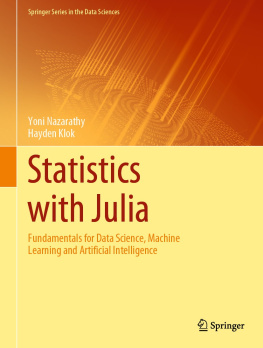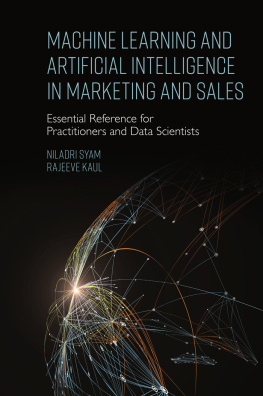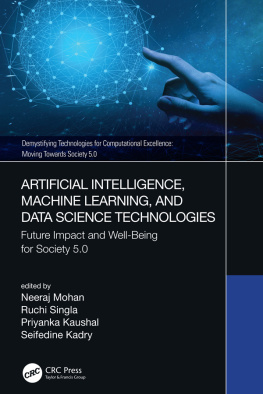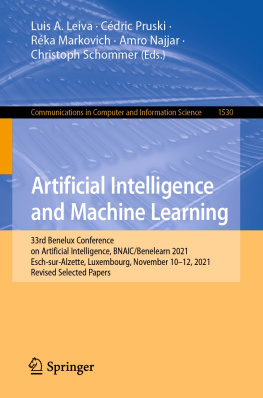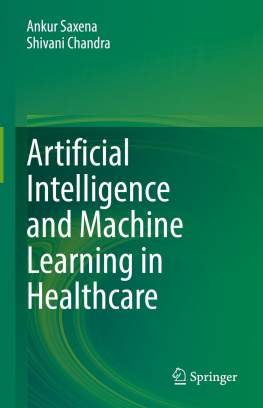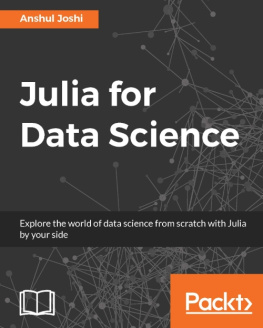Yoni Nazarathy - Statistics with Julia: Fundamentals for Data Science, Machine Learning and Artificial Intelligence
Here you can read online Yoni Nazarathy - Statistics with Julia: Fundamentals for Data Science, Machine Learning and Artificial Intelligence full text of the book (entire story) in english for free. Download pdf and epub, get meaning, cover and reviews about this ebook. year: 2021, publisher: Springer Nature, genre: Home and family. Description of the work, (preface) as well as reviews are available. Best literature library LitArk.com created for fans of good reading and offers a wide selection of genres:
Romance novel
Science fiction
Adventure
Detective
Science
History
Home and family
Prose
Art
Politics
Computer
Non-fiction
Religion
Business
Children
Humor
Choose a favorite category and find really read worthwhile books. Enjoy immersion in the world of imagination, feel the emotions of the characters or learn something new for yourself, make an fascinating discovery.
- Book:Statistics with Julia: Fundamentals for Data Science, Machine Learning and Artificial Intelligence
- Author:
- Publisher:Springer Nature
- Genre:
- Year:2021
- Rating:3 / 5
- Favourites:Add to favourites
- Your mark:
- 60
- 1
- 2
- 3
- 4
- 5
Statistics with Julia: Fundamentals for Data Science, Machine Learning and Artificial Intelligence: summary, description and annotation
We offer to read an annotation, description, summary or preface (depends on what the author of the book "Statistics with Julia: Fundamentals for Data Science, Machine Learning and Artificial Intelligence" wrote himself). If you haven't found the necessary information about the book — write in the comments, we will try to find it.
Yoni Nazarathy: author's other books
Who wrote Statistics with Julia: Fundamentals for Data Science, Machine Learning and Artificial Intelligence? Find out the surname, the name of the author of the book and a list of all author's works by series.
Statistics with Julia: Fundamentals for Data Science, Machine Learning and Artificial Intelligence — read online for free the complete book (whole text) full work
Below is the text of the book, divided by pages. System saving the place of the last page read, allows you to conveniently read the book "Statistics with Julia: Fundamentals for Data Science, Machine Learning and Artificial Intelligence" online for free, without having to search again every time where you left off. Put a bookmark, and you can go to the page where you finished reading at any time.
Font size:
Interval:
Bookmark:
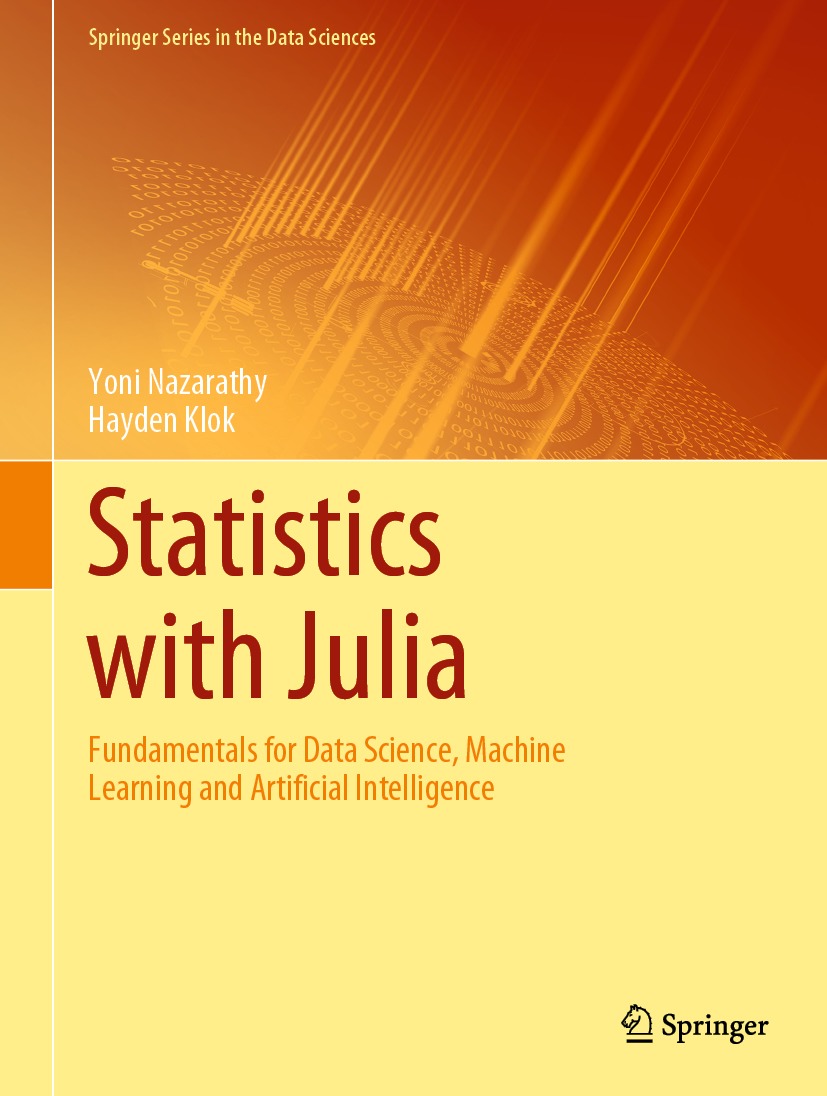
Springer Series in the Data Sciences focuses primarily on monographs and graduate level textbooks. The target audience includes students and researchers working in and across the fields of mathematics, theoretical computer science, and statistics. Data Analysis and Interpretation is a broad field encompassing some of the fastest-growing subjects in interdisciplinary statistics, mathematics and computer science. It encompasses a process of inspecting, cleaning, transforming, and modeling data with the goal of discovering useful information, suggesting conclusions, and supporting decision making. Data analysis has multiple facets and approaches, including diverse techniques under a variety of names, in different business, science, and social science domains. Springer Series in the Data Sciences addresses the needs of a broad spectrum of scientists and students who are utilizing quantitative methods in their daily research. The series is broad but structured, including topics within all core areas of the data sciences. The breadth of the series reflects the variation of scholarly projects currently underway in the field of machine learning.
More information about this series at http://www.springer.com/series/13852

This Springer imprint is published by the registered company Springer Nature Switzerland AG
The registered company address is: Gewerbestrasse 11, 6330 Cham, Switzerland
To my mother, Julianna Forbes,
Hayden Klok.
To my parents, Lea and Moshe,
Yoni Nazarathy.
The journey of this book began at the end of 2016 when preparing a statistics course for The University of Queensland. At the time, the Julia language was already showing itself as a powerful new and applicable tool, even though it was only at version 0.5. For this reason, we chose Julia for use in the course. By exposing students to statistics with Julia early on, they would be able to employ Julia for data science, numerical computation, and machine-learning tasks later in their careers. This choice was not without some resistance from students and colleagues, since back then, as is still now in 2020, in terms of volume, the R-language dominates the world of statistics, in the same way that Python dominates the world of machine learning. So why Julia?
There were three main reasons: performance, simplicity, and flexibility. Julia is quickly becoming a major contending language in the world of data science, statistics, machine learning, artificial intelligence, and general scientific computing. It is easy to use like R, Python, and MATLAB, but due to its type system and just-in-time compilation, it performs computations much more efficiently. This enables it to be fast, not just in terms of runtime, but also in terms of development time. In addition, there are many different Julia packages. These include advanced methods for the data scientist, statistician, or machine-learning practitioner. Hence the language and ecosystem has a broad scope of application.
Our goal in writing this book was to create a resource for understanding the fundamental concepts of statistics needed for mastering machine learning, data science, and artificial intelligence. This is with a view of introducing the reader to Julia as a computational tool. The book also aims to serve as a reference for the data scientist, machine-learning practitioner, bio-statistician, finance professional, or engineer, who has either studied statistics before, or wishes to fill gaps in their understanding. In todays world, such students, professionals, or researchers often use advanced methods and techniques. However, one is often required to take a step back and explore or revisit fundamental concepts. Revisiting these concepts with the aid of a programming language such as Julia immediately makes the concepts concrete.
Now, 4 years since we embarked on this book writing journey, Julia has matured beyond v1.0, and the book has matured along with it. Julia can be easily deployed by anyone who wishes to use it. However, currently many of Julias users are hard-core developers that contribute to the languages standard libraries, and to the extensive package ecosystem that surrounds it. Therefore, much of the Julia material available at present is aimed at other developers rather than end users. This is where our book comes in, as it has been written with the end user in mind.
This book is about statistics, probability, data science, machine learning, and artificial intelligence. By reading it you should be able to gain a basic understanding of the concepts that underpin these fields. However in contrast to books that focus on theory, this book is code example centric. Almost all of the concepts that we introduce are backed by illustrative code examples. Similarly almost all of the figures are generated via the code examples. The code examples have been deliberately written in a simple format, sometimes at the expense of efficiency and generality, but with the advantage of being easily readable. Each of the code examples aims to convey a specific statistical point, while covering Julia programming concepts in parallel. The code examples are reminiscent of examples that a lecturer may use in a lecture to illustrate concepts. The content of the book is written in a manner that does not assume any prior statistical knowledge, and in fact only assumes some basic programming experience and a basic understanding of mathematical notation.
Font size:
Interval:
Bookmark:
Similar books «Statistics with Julia: Fundamentals for Data Science, Machine Learning and Artificial Intelligence»
Look at similar books to Statistics with Julia: Fundamentals for Data Science, Machine Learning and Artificial Intelligence. We have selected literature similar in name and meaning in the hope of providing readers with more options to find new, interesting, not yet read works.
Discussion, reviews of the book Statistics with Julia: Fundamentals for Data Science, Machine Learning and Artificial Intelligence and just readers' own opinions. Leave your comments, write what you think about the work, its meaning or the main characters. Specify what exactly you liked and what you didn't like, and why you think so.

